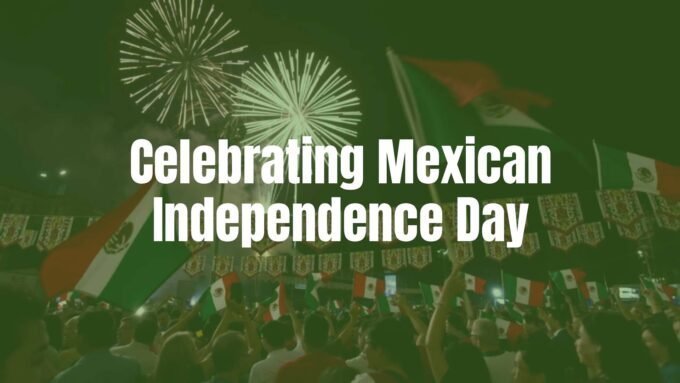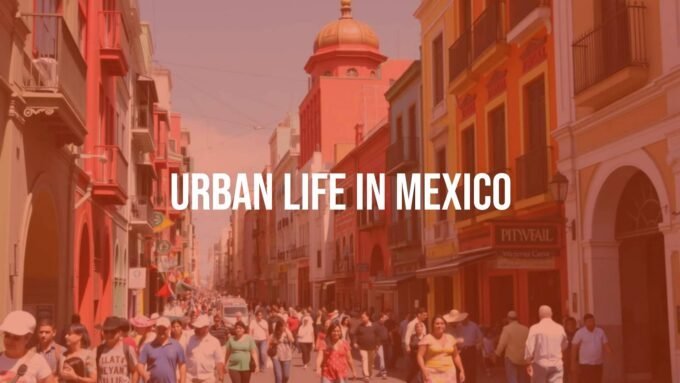Mexico is a large country full of variety. It offers much more than just sunny beaches and big hotels. Here, you can walk through ancient ruins, enjoy lively colonial cities, relax in beautiful nature spots, and try exciting adventures. Each corner of Mexico is different, with history, bright colors, and friendly people, making it a top choice for travelers all over the world.

Why Visit Mexico’s Unmissable Destinations?
Mexico is not just a place; it’s a mix of many cultures, landscapes, and foods. Many people come for the beaches but quickly find the country has so much more. Those who spend time traveling here often realize their first impression was too simple. Mexico’s real charm comes alive when you see its local life, traditions, and real stories.
What Makes Mexico Special for Visitors?
Mexico stands out because you can have many different experiences here. You might walk in a busy market, swim in clear underground pools called cenotes, climb old pyramids, and end your day resting on a quiet beach. The country mixes old and new, quiet and busy. Locals are known for being welcoming and showing visitors their wide range of music, art, and food. Trying street tacos or complex dishes like mole gives you a taste of its rich culture. Even after months of travel, you’ll still feel like there’s more to discover in Mexico.
How Do Key Mexican Sites Show Its Culture and Nature?
The main places to see in Mexico show its deep history and natural beauty. The Mayan sites like Chichen Itza and Tulum are more than old rocks-they show how ancient people lived, studied the stars, and built impressive cities. Colonial cities such as San Miguel de Allende and Oaxaca City display bright buildings and old streets, showing the mix of Spanish and native history. These cities are filled with music, markets, and celebrations. Nature spots like Las Coloradas’ pink lakes, Isla Holbox’s glowing waters, or Copper Canyon’s rugged views highlight how diverse the land is. Every place teaches you something about Mexico’s past or its wild side, and they reflect how closely local traditions are tied to the country’s landscapes.

When Should You Visit Mexico’s Top Spots?
Picking the right time for your Mexico trip is important to make the most of it. Mexico usually has pleasant weather all year, but knowing that different areas can have different climates will help you plan better.
How Does the Weather Impact Your Trip?
Weather affects what you can do and where you can go. Mexico has a dry season (November to April) with sunny and less humid days, perfect for sightseeing or beach trips. These months are also the busiest, so you’ll see more tourists and higher prices. The rainy season (May to October) brings short, heavy showers, often in the afternoons, but mornings are usually clear. The land turns green, and some things-like glowing plankton-are more common. Hurricanes can happen along the Caribbean between June and October. Some animals, such as whale sharks, are best spotted during this season, even if there’s more rain.

Tourist Seasons by Area
| Region | Best Time to Visit | Notes |
|---|---|---|
| Yucatán Peninsula (Cancun, Tulum, Playa del Carmen) | November to April | Most crowded and expensive, great weather |
| Central Mexico (Mexico City, Oaxaca, San Miguel) | November to April | Mild temperatures, cultural events |
| Pacific Coast (Puerto Vallarta, Cabo San Lucas) | May and June | Fewer people, warm and calm, best for whale watching Dec-Apr |
If you want fewer tourists and lower prices, consider coming just before or after the busy months, but expect warmer days or light rain.
Must-See Places in Mexico by Region
Each region of Mexico has its own character and list of spots you should see. Whether you like beaches, old towns, mountains, or deserts, you’ll find a region that fits your interests.
Yucatán Peninsula
- Chichen Itza: An ancient Mayan city, known for its big step pyramid, it’s one of the most famous archeological sites in the world. The site is large and busy, but a guided tour helps you learn the most. It’s about two hours by car from Cancun or Playa del Carmen.
- Tulum: This coastal town features clifftop Mayan ruins with ocean views, along with trendy beach clubs and a relaxed, artsy feel. Lots of natural swimming holes (cenotes) are nearby for swimming and exploring.
- Isla Holbox: A small, peaceful island perfect for escaping crowds. There are no cars – just bikes and golf carts. You can see whale sharks or glowing plankton during certain parts of the year.
- Cozumel: Famous for scuba diving and snorkeling on the Mesoamerican Reef. Easy to reach by ferry, it offers both quiet beaches and busy town areas. Rental cars or taxis help you see more than just the port.
- Valladolid: A colorful colonial town close to Chichen Itza, cenotes, and the pink lakes of Las Coloradas. Great for traditional food and strolling pretty streets.
- Cancun: Best for all-inclusive resorts and lively nightlife, but also good for day trips to ruins and cenotes. Offers easy arrival from abroad.
- Bacalar: Known for its “lake of seven colors,” Bacalar is a quieter spot for boat trips, kayaking, and relaxed lakefront dining.
- Mérida: The largest city in the region and a center for Yucatecan culture. Known for its museums, markets, live music, and traditional foods. The city is less touristy than beach areas.
- Isla Mujeres: Just a 30-minute ferry from Cancun, this island mixes stunning beaches with local life. Golf carts are popular for seeing the island’s sights. It’s also a place for snorkeling and special underwater art.
- Las Coloradas: Noted for bright pink lakes caused by minerals and algae, it’s a unique photo spot usually seen on day trips from other cities.

Central Mexico
- Mexico City: The capital offers museums, historic sites, vibrant neighborhoods, and endless food. Take a boat in Xochimilco or join a Lucha Libre match for a fun local experience.
- San Miguel de Allende: A colorful colonial city filled with art, historic buildings, and lively plazas. Its relaxed vibe attracts both visitors and artists.
- Guanajuato: Famous for bright houses on hillsides and old alleyways. The city is youthful, thanks to its university, and has lots of festivals and art.
- Puebla: Known for strange-tiled buildings, great food (especially mole and chiles en nogada), and the world’s largest pyramid nearby.
- Morelia: A beautifully kept colonial city with wide streets, old churches, plazas, and budget-friendly attractions. Sunday streets close for biking events.
- Valle de Bravo: Popular with city dwellers for adventure sports, lake views, and as the best place to see millions of Monarch butterflies in winter.
- Taxco: Famous for silver jewelry and its dramatic Easter parades. This hill town is packed with markets and pretty, narrow streets.
- Tequila: The home of the famous drink, surrounded by blue agave fields and offering distillery tours and lots of tastings.
- Malinalco: Set in a lush valley, this town is known for its ruins high on a hill, a unique old monastery, and quirky bug museum.

Pacific Coast
- Puerto Vallarta: Combines colonial buildings with big beaches and lots of international food. The city is welcoming to all kinds of travelers, with areas known for nightlife or relaxation.
- Sayulita: A small, cheerful surf town with a bohemian feel, ideal for chilling out, eating seafood, shopping, or watching sunsets.
- Mazatlán: A less commercialized beach city with an historic center, long boardwalk, and wholesome local beaches.
- Ixtapa & Zihuatanejo: Ixtapa has modern resorts and beaches, Zihuatanejo next door feels more local and traditional.
Southern Mexico
- Oaxaca City: A bright, cultural city known for food, markets, festivals, and nearby ruins. July and early November are lively for local celebrations.
- Hierve el Agua: Natural pools and petrified waterfalls you can swim in, with mountain views, close to Oaxaca City.
- Puerto Escondido: Surf town with good waves and a laid-back vibe. Try surfing, watch sea turtles, or join a dolphin or bioluminescence tour.
- San Cristóbal de las Casas: Colonial town in cool highlands, surrounded by indigenous culture and close to canyons, waterfalls, and ancient ruins.
- Lacandon Jungle: Thick jungle in Chiapas, home to Mayan ruins (like Bonampak and Yaxchilán), many animals, and guided eco-tours.
- Huatulco: String of bays and beaches great for swimming, snorkeling, and eco-exploring. Also known for coffee plantations nearby.
- Mazunte: Quiet coastal village with a relaxed pace, popular for its food, hippy scene, and bioluminescence tours.
Northern Mexico and Baja Peninsula
- Copper Canyon: Bigger than the Grand Canyon, this area is full of hiking trails, scenic train rides, and adventure parks.
- Cabo San Lucas: Known for its rocky coast, lively nightlife, whale watching (Dec-Apr), and luxury resorts.
- La Paz: A quiet city that makes a good base for whale shark swims, sea lion dives, and beaches like Playa Balandra.
- Magdalena Bay: Where gray whales gather in winter-these gentle animals often come close to boats.
- Islas Marietas: Volcanic islands off the coast with hidden beaches and protected marine life. Great for snorkeling and exploring by boat.
Things to Do in Mexico’s Must-See Places
| Activity | Best Spots | Description |
|---|---|---|
| See Ancient Ruins | Chichen Itza, Tulum, Teotihuacan, Palenque, Uxmal | Explore old cities and pyramids, many surrounded by jungle or sea. |
| Relax on Beaches | Cancun, Isla Mujeres, Tulum, Sayulita, Puerto Escondido, Cabo San Lucas | Swim, sunbathe, or try water sports like snorkeling or surfing. |
| Explore Colonial Towns | San Miguel de Allende, Oaxaca City, Puebla, Guanajuato | Walk through old streets, see colorful buildings, visit local markets. |
| Join Festivals | Oaxaca City (Day of the Dead, Guelaguetza), Taxco (Holy Week), Mexico City (Lucha Libre, mariachi music) | See parades, dances, and join in traditional celebrations. |
| Adventure and Nature | Cenotes (Yucatán), Copper Canyon, Monarch Butterfly migration, Sumidero Canyon, whale shark swims | Swim in natural pools, hike, zipline, or watch wildlife. |
| Try Local Food | Oaxaca City (mole), Puebla (chiles en nogada, mole), Mexico City (tacos), coasts (seafood tacos) | Taste tacos, moles, and more. Take a cooking class or food tour. |

Getting Around Mexico’s Main Sights
- Flights: The quickest way to travel long distances. Over 60 airports connect cities like Mexico City, Cancun, and Puerto Vallarta. Airlines include Aeroméxico, Volaris, and VivaAerobus. Book ahead for best prices.
- Buses: Well-organized and affordable. ADO is the main choice in the southeast. Luxury options like ETN and Primera Plus are comfortable. Buy tickets online or at the terminal.
- Car Rentals: Best for exploring at your own speed, especially in places like Yucatán or Baja. Rental is affordable, but always get good insurance. Main roads are usually good, but secondary ones may be rough.
- Colectivos and Rideshares: Shared minivans or taxi-buses for short routes between and within towns. Cheap and frequent. In cities, rideshares like Uber and DiDi are common. Always agree on the taxi price before getting in.
Tips for Your Trip
Safety and Health
- Drink only bottled or purified water.
- Eat at busy street stalls where locals go-food is fresh and safe.
- Stay alert in crowded places and avoid showing valuables.
- Learn some basic Spanish phrases for easier communication.
- Travel insurance is a smart idea for emergencies.
Culture and Manners
- Greet people with “Hola,” “Gracias,” and “Por favor.”
- Use polite titles like Señor/Señora.
- Tip waiters, guides, and hotel staff.
- Dress neatly, especially when visiting churches or attending special events.
- Always ask before taking someone’s photo.
- Be patient and friendly; it goes a long way.
Packing Suggestions
- Pack light and airy clothes for the heat, but bring a sweater for cooler evenings or highland areas.
- Good walking shoes for tours and ruins.
- Sun protection: hat, sunglasses, and sunscreen.
- Swimwear, flip-flops, and a towel for beaches or cenotes.
- Rain jacket or umbrella for the summer months.
- Bug spray, especially for jungle areas.
- Reusable water bottle and a small first aid kit.
Frequently Asked Questions
Which Place is the Safest in Mexico?
The Yucatán Peninsula (Cancun, Playa del Carmen, Tulum, Mérida) is often named as the safest area for travelers, thanks to its focus on tourism. Mérida is especially known for being calm and friendly. Still, basic precautions make any trip safer.
Where Should You Go on Your First Visit?
The Yucatán Peninsula is a great choice for beginners. It’s easy to get to, combines beaches, old ruins, and lively cities, and you don’t need to travel far between main sights. Cancun is an easy starting point, and from there you can see Mayan ruins, beautiful cenotes, and local culture in places like Mérida.
Which Destinations are the Most Popular?
The most visited places are on the Riviera Maya (Cancun, Tulum, Playa del Carmen), loved for their beaches and resorts. Mexico City is the main urban draw for culture lovers. On the Pacific, Cabo San Lucas and Puerto Vallarta are big favorites for their scenery. Oaxaca City attracts foodies and those interested in culture and festivals, especially during Day of the Dead.














Leave a comment